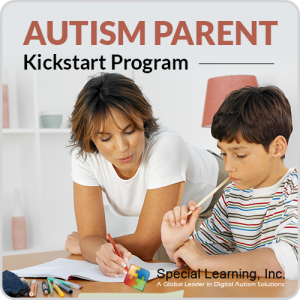Obtaining Proper Diagnosis
Obtaining a diagnosis for Autism Spectrum Disorders (ASD) is a complex task that is achieved in collaboration with the child, the parents, and the healthcare professionals. Sadly, there is no sole diagnostic test that can identify childhood autism. It includes different screening processes, medical tests, and evaluations that seem to never end and can easily take a toll on the child and the child’s parents and caregivers.
Diagnosing autism early is important. Parents and caregivers alike should keep in mind that symptoms of autism are very hard to identify since they develop gradually and could evidently be seen only when the child reaches school age. Observation of the parents is an essential part of diagnosing autism. In all tests, these observations will be repeatedly studied and asked from the parents.
According to the Center for Disease Control (CDC), there are 2 steps in obtaining an autism diagnosis. These are the developmental screening process and the comprehensive diagnostic evaluation
Developmental Screening
Developmental screening begins when the child is brought to the pediatrician for a well-baby check-up. It is recommended that developmental screenings be done when the child is 9, 18, and 24 or 30 months old, and screenings specifically for ASD should be done when the child is 18 and 24 months old.
The developmental screening process involves answering questionnaires or filling up checklists that serve as a guide for pediatricians. These checklists are compared to the normal developmental milestones of a child. Developmental milestones are a set of functional skills or age-specific tasks that most children can do at a certain age range (Boyse, K., 2010). Any deviations or delays in the manifestation of these milestones can be an early sign of autism.
Comprehensive Diagnostic Evaluation
Comprehensive diagnostic evaluation is done when the results of developmental screening show cause for concern such as delays in speech and communication skills or an alteration in social development is present. In this step, a hearing and vision screening, genetic testing, neurological testing, and another medical testing may be included and performed by a multi-disciplinary team of health professionals. As the results of these different tests arrive, your pediatrician may refer you to a specialist that is more equipped to handle ASD like a pediatric neurologist, psychologist, psychiatrists and different types of certified therapists appropriate for the area of concern so that your child can get the utmost care he or she deserves.
It is important to bear in mind that Autism Spectrum Disorders are still ongoing studies. Diagnostic tools and treatments are still being discovered and proven. One clinician may recommend a test while another may suggest a different type of diagnostic procedure. It is best to find a clinician who can refer you to other specialists if he finds the need for it.
Remember that a formal diagnosis is essential for a parent to be able to start helping his or her child to improve their developmental skills and behaviors and understand autism.
References:
Boyse, K. (2010, February). Developmental Milestones. Retrieved May 11, 2011, from http://www.med.umich.edu/yourchild/topics/devmile.htm
Centers for Disease Control and Prevention. cdc.gov. Screening and Development. Retrieved May 9, 2011from http://www.cdc.gov/ncbddd/autism/screening.html
American Academy of Pediatrics. Aap.org. Autism. Retrieved May 11, 2011, from http://www.aap.org/healthtopics/autism.cfm
Copyright © by Special Learning Inc. All right reserved.
No part of this article may be reproduced in any manner whatsoever without written permission except in the case of brief quotations embodied in critical articles and reviews.
For information, contact Special Learning Inc., at: contact@special-learning.com








